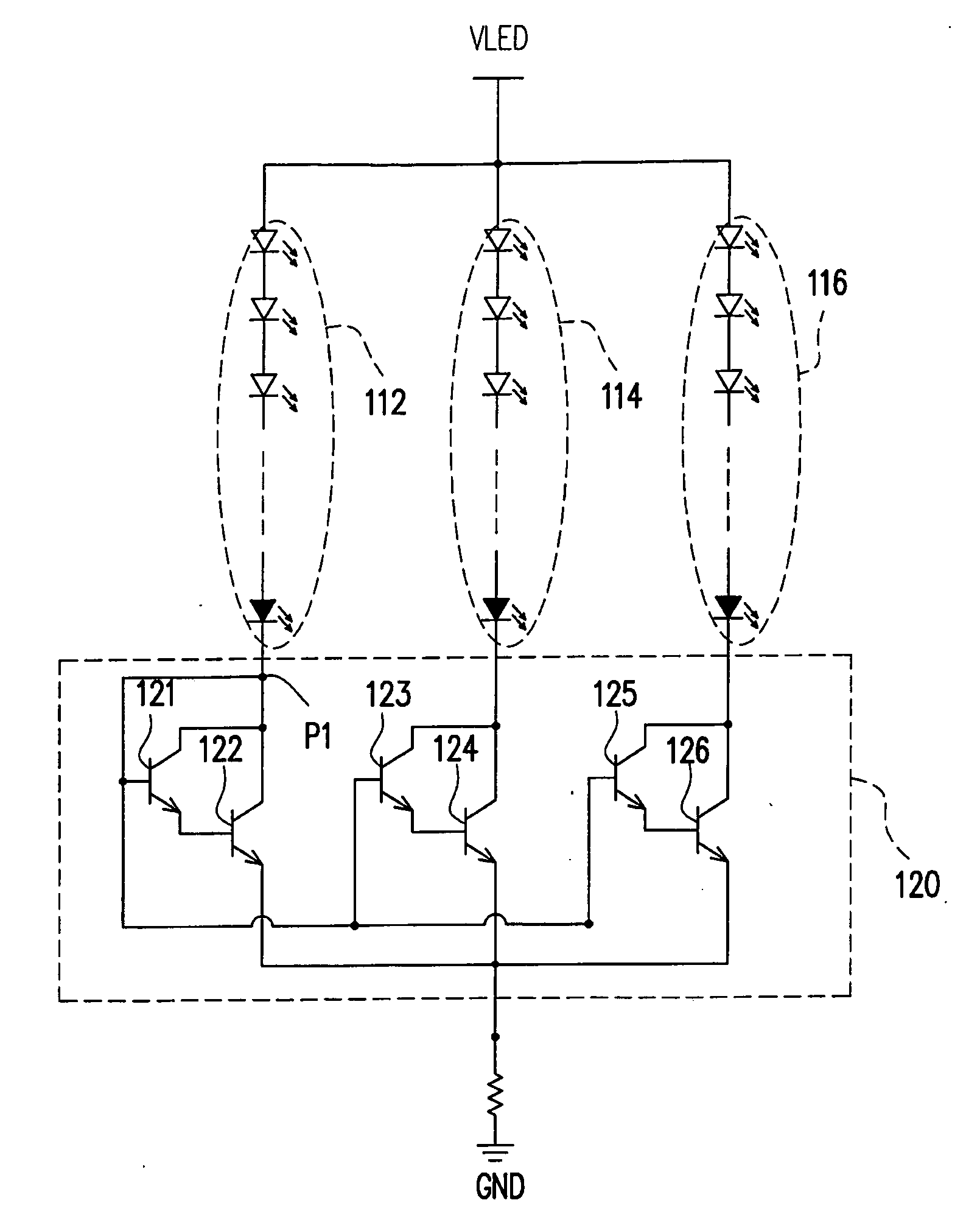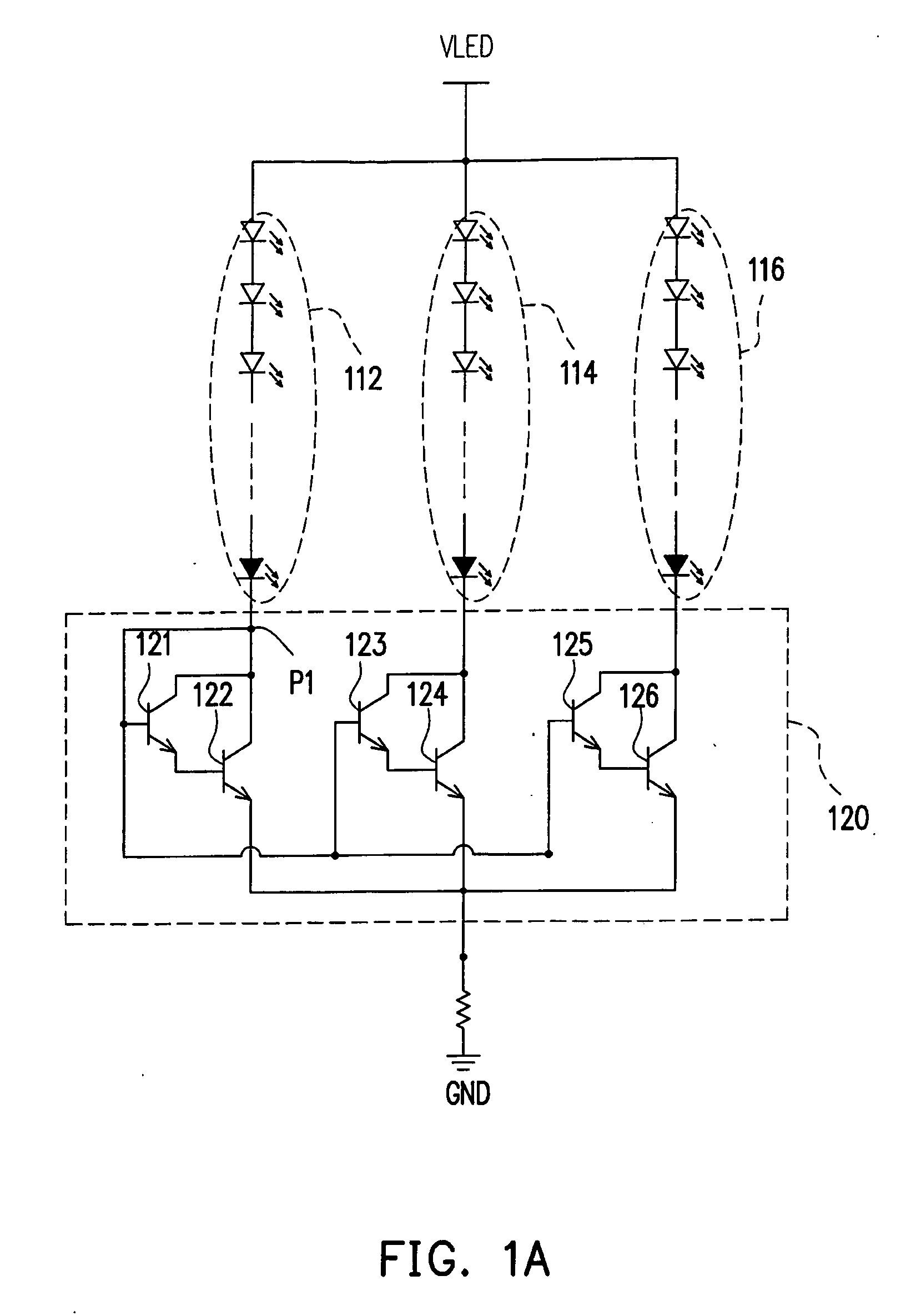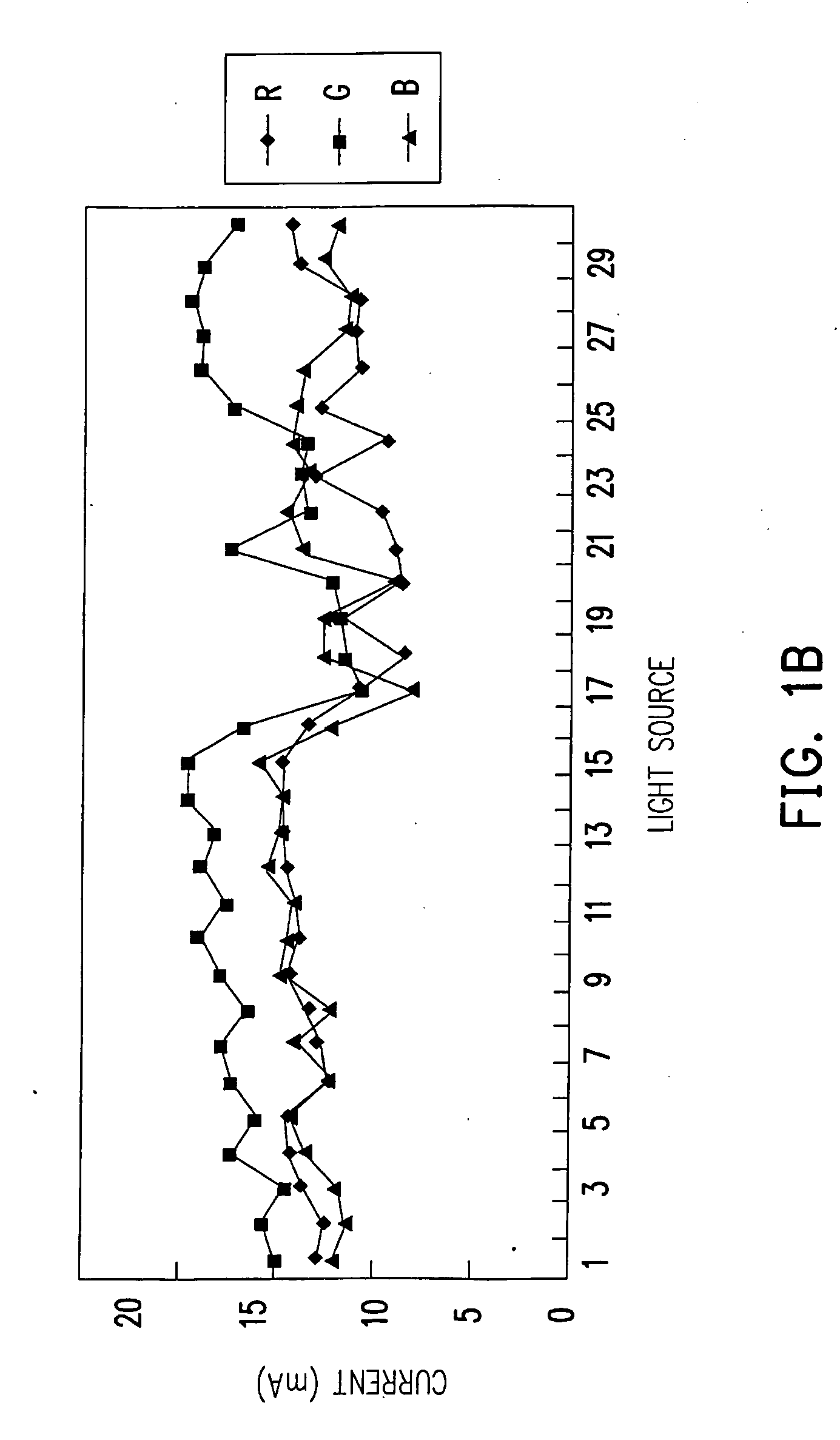Light source driving circuit for backlight module
- Summary
- Abstract
- Description
- Claims
- Application Information
AI Technical Summary
Benefits of technology
Problems solved by technology
Method used
Image
Examples
first embodiment
A First Embodiment
[0037]FIG. 3A is a diagram of a light source driving circuit for a backlight module according to the first embodiment of the present invention. Referring to FIG. 3A, a backlight unit 310 includes multiple LED strings 312, 314 and 316 served as light sources, and a light source driving circuit 320 includes driving units 322, 324 and 326 and a feedback resistor R3. Each of the LED strings 312, 314 and 316 is formed by multiple LEDs in series connection. The anode terminals of the LED strings 312, 314 and 316 are coupled to a voltage source VLED, while the cathode terminals thereof are respectively coupled to the driving units 322, 324 and 326 in the light source driving circuit 320. The light source driving circuit 320 herein is mainly for reducing the differences between the driving currents I1, I2 and I3 passing through the LED strings 312, 314 and 316.
[0038]The driving unit 322 includes a bias resistor R1, a transistor M31, a reference resistor R2 and a shunt regu...
second embodiment
The Second Embodiment
[0046]FIG. 4 is a diagram of a light source driving circuit according to the second embodiment of the present invention. The major difference between FIG. 4 and FIG. 3A rests in that each of the driving units 422, 424 and 426 in a light source driving circuit 420 of FIG. 4 includes an additional capacitor C41, wherein a terminal of C41 is coupled to the first output / input terminal of the transistor M31, while another terminal thereof is coupled to the second output / input terminal of the transistor M31.
[0047]To obtain different luminance of an LED backlight source, normally, a plurality of LEDs in series connection is used to form an LED string (for example, 312, 314 and 316). However, such a design tends to produce abnormal current waveforms so that the luminance of the LEDs fails to reach the required specification.
[0048]The study of the above problem found that the above-mentioned abnormal current waveforms are caused by unmatched impedances between the capaci...
third embodiment
The Third Embodiment
[0049]FIG. 5 is a diagram of a light source driving circuit with dimming function according to the third embodiment of the present invention. The major difference between FIG. 5 and FIG. 4 rests in that the circuit of FIG. 5 further employs a dimming transistor M51, wherein the third output / input terminal of the dimming transistor M51 is coupled to the common terminal PCOM, the fourth output / input terminal thereof is coupled to the feedback resistor R3 and the control terminal thereof is coupled to a dimming control voltage PWMD. The dimming control voltage PWMD takes pulse width adjustment mode (PWA mode) to affect the time when the dimming transistor M51 is on for adjusting the amounts of the driving currents I1, I2 and I3 to adjust the luminance of the LEDs in the LED strings 312, 314 and 316 and thereby to achieve dimming function. In the embodiment, a light source driving circuit 520 also employs the capacitor C41 to reduce the impact on the driving currents...
PUM
 Login to View More
Login to View More Abstract
Description
Claims
Application Information
 Login to View More
Login to View More - R&D
- Intellectual Property
- Life Sciences
- Materials
- Tech Scout
- Unparalleled Data Quality
- Higher Quality Content
- 60% Fewer Hallucinations
Browse by: Latest US Patents, China's latest patents, Technical Efficacy Thesaurus, Application Domain, Technology Topic, Popular Technical Reports.
© 2025 PatSnap. All rights reserved.Legal|Privacy policy|Modern Slavery Act Transparency Statement|Sitemap|About US| Contact US: help@patsnap.com



